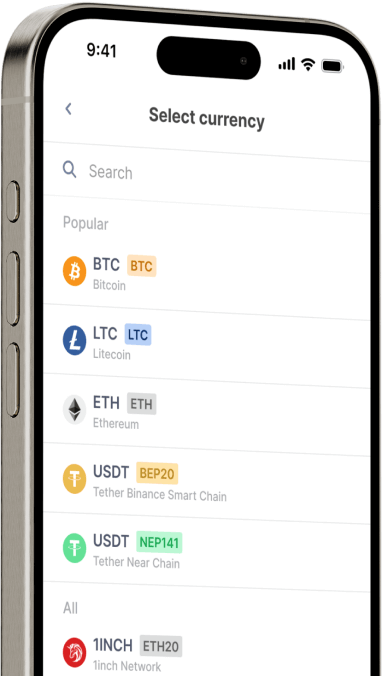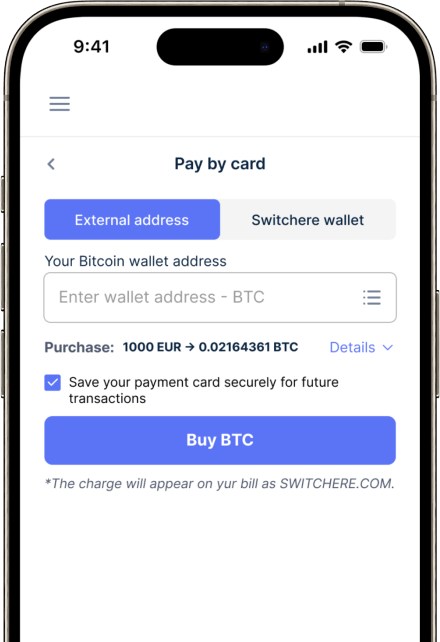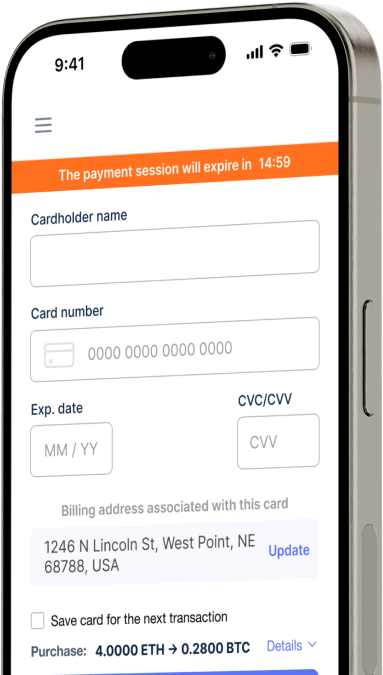Convertir
Egyptian pound (EGP) a Celsius (CEL) al instante
Compre Celsius (CEL) con Egyptian pound (EGP) fácilmente en Switchere y benefíciese de transacciones rápidas y seguras.
Acerca de
Celsius (CEL)
Celsius Network, con su token nativo CEL, surgió como una importante plataforma de finanzas centralizadas (CeFi) diseñada para cerrar la brecha entre la banca tradicional y el mundo de los activos digitales. Su función principal era ofrecer a los usuarios la capacidad de generar rendimiento sobre sus tenencias de criptomonedas y solicitar préstamos con garantía de criptoactivos. La plataforma operaba bajo un modelo de custodia, gestionando los fondos de los usuarios para generar ingresos por intereses a través de actividades de préstamo a prestatarios institucionales. Este modelo la posicionó como una alternativa fácil de usar para los poseedores de criptomonedas que buscaban poner a trabajar sus activos sin tener que navegar por complejos protocolos DeFi.
El token CEL era el núcleo de su sistema de lealtad y recompensas. Como token de utilidad, mantener y usar CEL proporcionaba beneficios tangibles dentro del ecosistema de Celsius, como tasas de interés preferenciales tanto para ganar como para pedir prestado. Los usuarios podían recibir mayores rendimientos sobre sus activos depositados y tasas más bajas en los préstamos, con recompensas a menudo distribuidas semanalmente en forma de CEL. Esta estructura de tokenómica fue diseñada para incentivar la lealtad del usuario e impulsar la demanda del activo nativo. Sin embargo, la plataforma enfrentó importantes desafíos operativos y presiones de mercado, lo que finalmente la llevó a declararse en bancarrota bajo el Capítulo 11, impactando profundamente a sus usuarios y redefiniendo la narrativa sobre el riesgo en la industria de préstamos CeFi.
Comprar otras 150+ criptomonedas por Egyptian pound (EGP)
Otras monedas para Egyptian pound (EGP)
-
EGP a ZRX
-
EGP a 1INCH
-
EGP a AAVE
-
EGP a ACH
-
EGP a ALGO
-
EGP a TLM
-
EGP a ANKR
-
EGP a APE
-
EGP a NFT
-
EGP a API3
-
EGP a APT
-
EGP a ARPA
-
EGP a AUDIO
-
EGP a AVAX
-
EGP a AVAX
-
EGP a AXS
-
EGP a BADGER
-
EGP a BAL
-
EGP a BNT
-
EGP a BAT
-
EGP a BNB
-
EGP a BSW
-
EGP a BSV
-
EGP a BLUR
-
EGP a BONE
-
EGP a CTSI
-
EGP a CELR
-
EGP a CELO
-
EGP a CEL
-
EGP a LINK
-
EGP a CHZ
-
EGP a CHR
-
EGP a C98
-
EGP a COMP
-
EGP a CFX
-
EGP a PEOPLE
-
EGP a CVX
-
EGP a ATOM
-
EGP a CTC
-
EGP a CRV
-
EGP a DAI
-
EGP a DASH
-
EGP a MANA
-
EGP a DENT
-
EGP a DGB
-
EGP a DYDX
-
EGP a XEC
-
EGP a EOS
-
EGP a ETC
-
EGP a ENS
-
EGP a ETHW
-
EGP a FET
-
EGP a FIL
-
EGP a FLOKI
-
EGP a GALA
-
EGP a GNO
-
EGP a ONE
-
EGP a HBAR
-
EGP a HOT
-
EGP a HOOK
-
EGP a ICX
-
EGP a ILV
-
EGP a IMX
-
EGP a INJ
-
EGP a ICP
-
EGP a IOST
-
EGP a IOTX
-
EGP a JASMY
-
EGP a JST
-
EGP a KAVA
-
EGP a KCS
-
EGP a KSM
-
EGP a KNC
-
EGP a LDO
-
EGP a LQTY
-
EGP a LPT
-
EGP a LOOKS
-
EGP a LRC
-
EGP a LUNA
-
EGP a MKR
-
EGP a MASK
-
EGP a EGLD
-
EGP a ALICE
-
EGP a NEAR
-
EGP a XEM
-
EGP a NEXO
-
EGP a NOT
-
EGP a NMR
-
EGP a OKB
-
EGP a OMG
-
EGP a ONT
-
EGP a EDU
-
EGP a OP
-
EGP a OGN
-
EGP a CAKE
-
EGP a PAXG
-
EGP a PENDLE
-
EGP a DOT
-
EGP a POL
-
EGP a QTUM
-
EGP a QNT
-
EGP a RDNT
-
EGP a XRD
-
EGP a RVN
-
EGP a REN
-
EGP a RSR
-
EGP a RLC
-
EGP a RPL
-
EGP a SFP
-
EGP a SHIB
-
EGP a SKL
-
EGP a SXP
-
EGP a STND
-
EGP a STG
-
EGP a XLM
-
EGP a GMT
-
EGP a STORJ
-
EGP a STMX
-
EGP a SUSHI
-
EGP a SNX
-
EGP a USDT (Polygon)
-
EGP a USDT (AVAC)
-
EGP a USDT (BEP20)
-
EGP a USDT (ERC20)
-
EGP a USDT (SPL)
-
EGP a USDT (NEP141)
-
EGP a USDT (FA2)
-
EGP a USDT (TRC20)
-
EGP a USDT (JETTON)
-
EGP a XTZ
-
EGP a GRT
-
EGP a SAND
-
EGP a TFUEL
-
EGP a THETA
-
EGP a RUNE
-
EGP a TON
-
EGP a TUSD (BEP20)
-
EGP a TUSD (TRC20)
-
EGP a TWT
-
EGP a UOS
-
EGP a UMA
-
EGP a UNI
-
EGP a USDC (Polygon)
-
EGP a USDC (SPL)
-
EGP a USDC (OP)
-
EGP a USDC (BEP20)
-
EGP a USDC (AVAC)
-
EGP a USDC (ARB)
-
EGP a USDC (ERC20)
-
EGP a VET
-
EGP a VRA
-
EGP a WAXP
-
EGP a WOO
-
EGP a WLD
-
EGP a WBTC
-
EGP a WMINIMA
-
EGP a XDC
-
EGP a YFI
-
EGP a YGG
-
EGP a ZIL
Cómo comprar Celsius (CEL)
Preguntas frecuentes
-
¿Qué es el par EGP/CEL y por qué se considera de alto riesgo?
El par EGP/CEL representa la relación de trading entre la libra egipcia (EGP) y el token Celsius (CEL). CEL es el token de utilidad nativo de Celsius Network, una plataforma de criptomonedas que se ha acogido al Capítulo 11 de la ley de quiebras. Debido a estos procedimientos legales en curso y la suspensión de las funciones principales de la plataforma, la compra del token CEL es extremadamente especulativa y conlleva un riesgo significativo, ya que su utilidad y valor futuros son inciertos hasta el resultado del plan de reestructuración.
-
¿Cuál era la utilidad original del token CEL dentro de la Celsius Network?
Originalmente, el token CEL era fundamental para la plataforma de generación de rendimiento de Celsius Network. Su utilidad se basaba en un programa de lealtad; mantener tokens CEL y elegir ganar recompensas en CEL proporcionaba a los usuarios beneficios como tasas de interés más altas en sus depósitos de criptomonedas y tasas de interés más bajas en préstamos respaldados por cripto. Este modelo de tokenomics fue diseñado para incentivar la tenencia del activo dentro de su ecosistema. Sin embargo, estas funciones han sido suspendidas debido al proceso de quiebra.
-
¿Qué medidas de seguridad se deben tomar al manejar un activo especulativo como CEL?
Al manejar un activo digital especulativo y de alto riesgo como CEL, la seguridad es primordial. Utilice siempre una billetera digital segura y sin custodia donde usted controle las claves privadas. Esto protege sus activos de los riesgos relacionados con los exchanges, lo cual es especialmente relevante dados los propios problemas de Celsius Network. Habilite la autenticación de dos factores (2FA) en todas las cuentas relacionadas, desconfíe de las estafas de phishing y nunca comparta sus claves privadas o frase semilla. Para cantidades mayores, considere usar una billetera de hardware (almacenamiento en frío) para una máxima seguridad.
-
¿Dónde se puede operar con el par EGP/CEL considerando que muchos exchanges han retirado el token CEL de sus listas?
Operar EGP directamente por CEL es extremadamente difícil. La mayoría de los principales exchanges de criptomonedas centralizados han retirado CEL de sus listas tras la declaración de quiebra. Los principales lugares para operar con CEL ahora se limitan a unos pocos exchanges descentralizados (DEX) o plataformas más pequeñas que aún lo admiten. Un usuario egipcio probablemente necesitaría primero comprar una criptomoneda principal como BTC o ETH con EGP a través de una rampa de acceso fiat local, y luego usar un DEX para intercambiar ese activo por CEL. Este proceso de varios pasos requiere una billetera digital segura de autocustodia.
-
¿Cuáles son los requisitos típicos de KYC/AML al usar EGP como rampa de acceso fiat?
Cualquier exchange de criptomonedas de buena reputación que admita depósitos en libras egipcias (EGP) aplicará un estricto cumplimiento de Conozca a su Cliente (KYC) y Anti-Lavado de Dinero (AML). Generalmente, se requiere que los usuarios proporcionen una identificación emitida por el gobierno (documento nacional de identidad, pasaporte), un comprobante de domicilio y, a veces, una selfie para la verificación. Estas regulaciones existen para prevenir delitos financieros y son una parte estándar del uso de una rampa de acceso fiat segura, esenciales antes de poder ejecutar cualquier compra de activos digitales basada en EGP.
-
¿Cómo afecta la quiebra de Celsius Network al volumen de operaciones y la liquidez del par EGP/CEL?
La quiebra ha diezmado la liquidez y el volumen de operaciones de todos los pares de CEL, incluido el teórico par EGP/CEL. La falta de una rampa de acceso fiat directa para EGP a CEL significa que prácticamente no hay un libro de órdenes para este par específico. Cualquier transacción sufriría de un deslizamiento extremadamente alto y baja liquidez, impulsada únicamente por el interés especulativo. La exclusión de las principales bolsas significa que el grupo de compradores y vendedores es muy pequeño, lo que dificulta la ejecución de operaciones a un precio estable.




